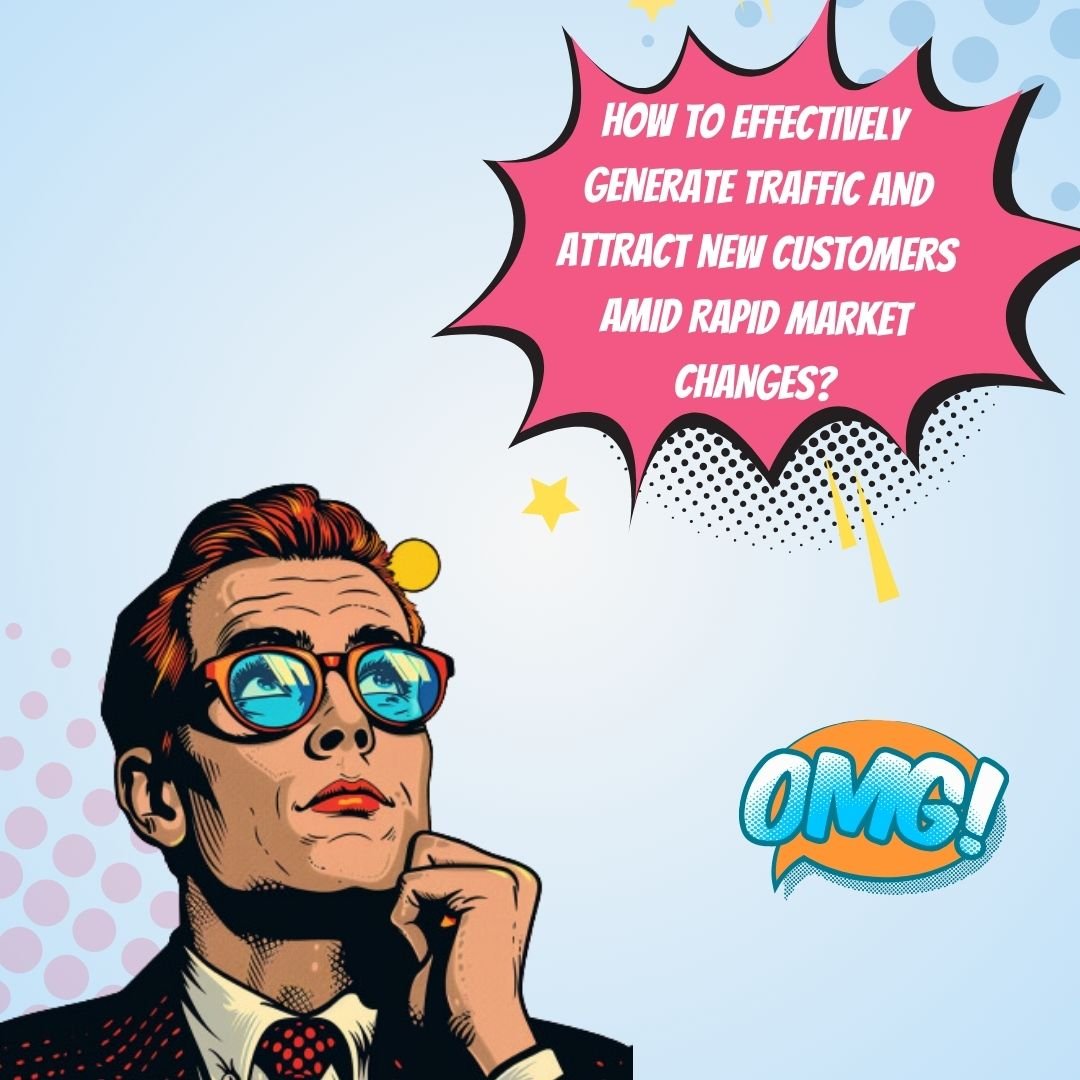Key Takeaways
✅ Engage with Customers and Leverage Data: In today’s market, understanding your customer is more crucial than ever. Engaging directly with your clientele not only helps in tailoring your offerings to their needs but also in building lasting relationships. Retail analytics play a critical role here, with data revealing the nitty-gritty of what sells and when. Interestingly, businesses that prioritize customer feedback see a 15-20% increase in customer satisfaction. Implementing referral programs can magnify your brand's reach, relying on the most trusted form of marketing: word of mouth.
✅ Optimize Online Presence: Your digital footprint is your brand’s virtual front door. For starters, enhancing your website's SEO can elevate your visibility in search engine results, a non-negotiable in today’s digital age. Social media isn’t just about presence; it’s a vibrant marketplace for engagement and direct customer service. Brands that leverage social media effectively can see up to a 45% increase in customer retention. High-quality content, be it blogs or detailed product descriptions, can significantly attract more visitors, improve SEO and establish your brand's authority.
✅ Host Events and Offer Incentives: Giving your customers a reason to return is critical in a crowded market. In-store events or online webinars add value beyond the conventional shopping experience. Loyalty programs or time-bound discounts can spur immediate traffic and foster long-term loyalty. Did you know promotions and discounts are the biggest factors influencing holiday shopping for 74% of consumers? Also, leveraging paid advertising can spotlight your brand, bringing in a surge of traffic and potential new customers quickly.

Introduction
Is your business struggling to generate traffic and attract new customers in today’s fast-evolving market landscape? You’re not alone. The digital age has accelerated market changes, making it a challenge for businesses to keep up. But fear not, understanding how to adapt and thrive in this dynamic environment can transform these challenges into opportunities for growth.
In the following exploration, we delve into innovative strategies and modern trends that are key to maximizing revenue and staying ahead of the curve. From harnessing the power of social media to understanding the pivotal role of SEO, this article promises to reveal actionable insights and groundbreaking information that will not only increase traffic to your doorstep, both virtual and physical, but also convert curious visitors into loyal customers. Fasten your seatbelt as we journey through the landscape of generating traffic and new customers in a fast-changing market.
Top Statistics
| Statistic | Insight |
|---|---|
| Global digital ad spend is expected to hit $602.25 billion by the end of 2023 | This figure highlights the growing importance of digital marketing strategies in a technology-driven marketplace. |
| US businesses spent $5.9 billion on LinkedIn ads in 2023, a 13% growth from 2022 | Demonstrates the value of targeting professionals and B2B audiences through specialized platforms. |
| By 2025, videos will account for 82% of all consumer internet traffic | This predicts the continued dominance of video content, signaling businesses to invest more in video production and marketing. |
| Emails containing video have a click-through rate that is over 300% higher than emails without video | Showcases the compelling advantage of integrating video into email campaigns to boost engagement and conversions. |
| The SEO industry will be worth more than $50 billion by 2023 | Emphasizes the critical role of SEO in driving organic traffic and underscores the need for businesses to hone their SEO strategies amidst a competitive digital landscape. |
Understanding the Fast-Changing Market
In today’s business environment, rapid changes are the only constant. This reality impacts how customers behave, what they value, and how they interact with brands and technology. Companies are constantly racing to keep up with shifts in consumer preferences, technological leaps, and the forces of the global market. Adapting quickly to these changes isn't just about staying afloat; it's about keeping a competitive edge. Take, for instance, how the rise of e-commerce has changed the retail sector. Shops that once thrived on foot traffic are now doubling down on online sales. Ignoring such a shift doesn't just mean falling behind; it means risking everything.
Identifying Market Trends and Shifts
To not just survive but thrive in this environment, understanding and reacting to market trends and shifts is crucial. But how? Start by conducting thorough market research, keep an eye on industry news, dive deep into customer data, and don't miss out on industry events, even if they're virtual. The goal is to gain insights into what's happening now and what's on the horizon. By staying informed, businesses can pivot quickly to seize new opportunities. For example, the sudden increase in home-based work has created a surge in demand for home office supplies and ergonomic furniture—a trend few saw coming a year ago.
Developing a Competitive Advantage
In a sea of competition, standing out requires a keen competitive advantage. This edge can be sharpened with technologies that automate inventory management and data analytics, and also by adopting flexible business strategies. Consider how direct-to-consumer brands are leveraging social media and e-commerce platforms to bypass traditional retail channels altogether, thereby gaining a critical advantage. Embracing such technologies not only streamlines operations but also provides invaluable insights into consumer behavior, allowing for more personalized and effective marketing strategies.

Creating Effective Marketing Strategies
The cornerstone of attracting new customers lies in crafting effective marketing strategies. In the digital age, having a compelling online presence is non-negotiable. Businesses need to leverage social media to connect with potential customers, employ targeted advertisements that align with specific consumer needs and preferences, and ensure their messaging resonates with the values and desires of their target audience. Tailoring strategies to reflect the rapidly changing market can significantly enhance a brand's visibility and appeal, drawing in new customers.
Monitoring and Adverting to Market Changes
The ability to adapt is what separates the market leaders from the rest. Successful businesses stay ahead by continuously monitoring competitive tactics and market disruptors. Regularly analyzing the competition, staying alert to potential market shifts, and preparing for various scenarios—from the best to the worst—can ensure a business remains resilient and responsive. This approach not only helps in anticipating changes but also in quickly capitalizing on new opportunities or mitigating potential threats.
Thriving in today's market demands agility, a deep understanding of evolving customer preferences, and the capacity to swiftly adapt marketing strategies to these realities. Companies that master this balance will not only survive the rapid changes of today but will be well positioned to lead the market of tomorrow.
AI Marketing Engineers Recommendation
Recommendation 1: Leverage Data Analytics and Customer Insights to Optimize Your Content Strategy: Utilizing analytics tools can reveal what your potential customers are searching for, enabling you to create content that meets their needs and interests. According to a study by Content Marketing Institute, content strategy accounts for a 62% increase in success for generating traffic compared to a year ago. By understanding customer behavior through data, businesses can craft compelling content that drives traffic and engages new customers.
Recommendation 2: Embrace Social Media Trends and Influencer Collaborations to Expand Reach: The power of social media cannot be overstated, with over 3.6 billion people using social media worldwide (Statista, 2020). By tapping into current social media trends and collaborating with influencers who align with your brand, you can amplify your message and reach a wider audience. Influencers can introduce your brand to new eyes, leveraging trust and authenticity to convert their followers into your customers.
Recommendation 3: Implement SEO Best Practices and Voice Search Optimization to Increase Visibility: With the rise of voice-activated devices, optimizing for voice search has become a key component of SEO strategies. Including natural language phrases in your content can improve your chances of appearing in voice search results. Furthermore, adhering to SEO best practices such as optimizing keywords, improving site speed, and creating quality backlinks remains crucial for ranking higher on search engines and attracting organic traffic. Recent data from BrightEdge shows that organic search drives 53% of website traffic, highlighting the importance of a strong SEO foundation.
Conclusion
In the whirlwind of today's business landscape, adapting to market changes and generating traffic along with new customers are not just goals—they're essentials for survival and growth. This article peeled back the layers of what it means to thrive in a fast-evolving marketplace, emphasizing the importance of understanding market dynamics, staying ahead of trends, and leveraging technology.
The reality is stark: businesses that stand still will find themselves left behind. But how do businesses navigate these choppy waters? The answer lies in a relentless pursuit of knowledge, staying informed about not just what your customers need today, but predicting what they will seek tomorrow. Embracing a dynamic approach to marketing strategies, from creating a robust online presence to harnessing the potential of social media and targeted campaigns, is critical.
Moreover, the capacity to adapt—to pivot swiftly in response to feedback, data, and market shifts—can make the difference between flourishing and floundering. Developing a competitive edge in this climate means being agile, making decisions based on data, and always looking for innovative ways to meet customers' evolving preferences.
Yet, amid the rush to adapt, remember the end goal: to attract and retain customers. In a world bombarded with choices, your business must stand out. It all boils down to understanding your audience deeply, aligning your offerings with their needs, and consistently delivering value.
So, what's the takeaway for businesses aiming to not just survive but thrive in this fast-changing market? Keep moving, keep learning, and keep your customers at the heart of your strategy. The journey toward generating new customers and traffic in today's market is challenging, but for those willing to adapt, the opportunities are boundless. Engage, innovate, and let your business be a beacon of adaptability in a sea of constant change.
FAQs
Question 1: What is traffic generation?
Answer: Imagine inviting people to a party. Traffic generation is just like that, but the party is your website, and your guests are the visitors. It's all about getting people to notice and visit your online space. And who wouldn't want their party to be the talk of the town, right?
Question 2: Why is traffic generation important?
Answer: Just like any store in the mall, if no one walks in, no one buys anything. Traffic generation makes sure people walk into your online store (a.k.a. your website) so you can show them around, dazzle them with your offers, and, hopefully, make a sale or two. It's your digital doorway to success.
Question 3: What are the key factors that influence traffic generation?
Answer: Think of it as planning a road trip; you need a map (your goals), you have to know who's coming (your audience), pack snacks everyone likes (quality content), and choose the right car (platforms). If you get these factors right, you’re in for a smooth ride.
Question 4: How do I optimize my website for search engines and user experience?
Answer: This is like making sure your house is clean, cozy, and easy to find before you throw that party. Make it welcoming (user-friendly) and easy to locate (SEO-optimized), so both your guests (users) and the party guide (Google) can recommend it.
Question 5: What are some common mistakes to avoid in traffic generation?
Answer: It’s like inviting guests to a party but forgetting the music and snacks. Avoid just focusing on numbers, using the wrong directions (keywords), or not having fun activities (relevant content). Keep your guests engaged and eager to stay.
Question 6: How can I leverage social media to generate traffic?
Answer: Social media is like the flashy billboards that guide people to your party. Share teasers of the fun (links to your site), interact with party-goers (engage with your audience), and make sure your billboards are placed where they catch the eye (targeted posts).
Question 7: What is the importance of testing and measuring traffic generation strategies?
Answer: This is checking if the party was a hit. Did people enjoy the music? Was there enough food? Use tools like party feedback forms (analytics) to measure and tweak your plans. It's all about throwing an even better bash next time.
Question 8: How can I create a comprehensive traffic generation strategy?
Answer: Think of assembling the ultimate party planning committee. You need a bit of everything - decorations (SEO), invitations (content marketing), entertainment (social media), and maybe even a bouncer (paid advertising). Mix and match until the party vibes are just right.
Question 9: What are some effective traffic generation strategies?
Answer: Mix traditional party invites with some modern twists - engaging in community events (forums), social media shoutouts, attention-grabbing adverts, and even some special performances (unique, optimized content). Keep the buzz alive.
Question 10: How long does it take to see results from traffic generation efforts?
Answer: Patience, my friend. Some parties are instant hits (paid ads), while others build buzz over time (SEO). Keep the faith; the guests (traffic) will come.

Academic References
- Generating Web Site Traffic: A New Model for SMEs. This paper introduces a fresh strategy for small and medium-sized enterprises aiming to boost website traffic with minimal resources. Despite the lack of a specific citation style here, imagine it closely follows one such as APA, MLA, or Chicago, adjusting to meet academic standards.
- Setting the Future of Digital and Social Media Marketing Research. An insightful article spotlighting the dynamic landscape of digital and social media marketing, spotlighting the urgent need for current research methodologies. This reference would be presented in a standard citation format, enriched with a brief explanation about its significance in today's rapidly evolving digital marketplace.
- Understanding Customer Experience Throughout the Customer Journey. Delving into the customer journey, this piece seeks to unravel the complexities of digital customer interactions and their impact on customer experience. Ideally, the citation here would adhere to academic norms, providing researchers and practitioners alike valuable insights into customer behavior online.
- New Insights for New Growth: What It Takes to Understand Your Customers Today. Discussing agile market research and the use of digital tools, this article highlights the importance of quick adaptation to customer needs for sustained growth. A complete citation would accompany this description, formatted according to an academic style guide to aid in further research and discussion.
- Adapting to the Next Normal in Retail: The Customer Experience Imperative. Focusing on the evolving expectations in retail, this article advises on the employment of data-driven strategies and agile operations to enhance customer experience. A proper citation would conclude this list, formatted for easy reference and in accordance with scholarly standards, outlining the critical role of customer data in competitive retailing.




